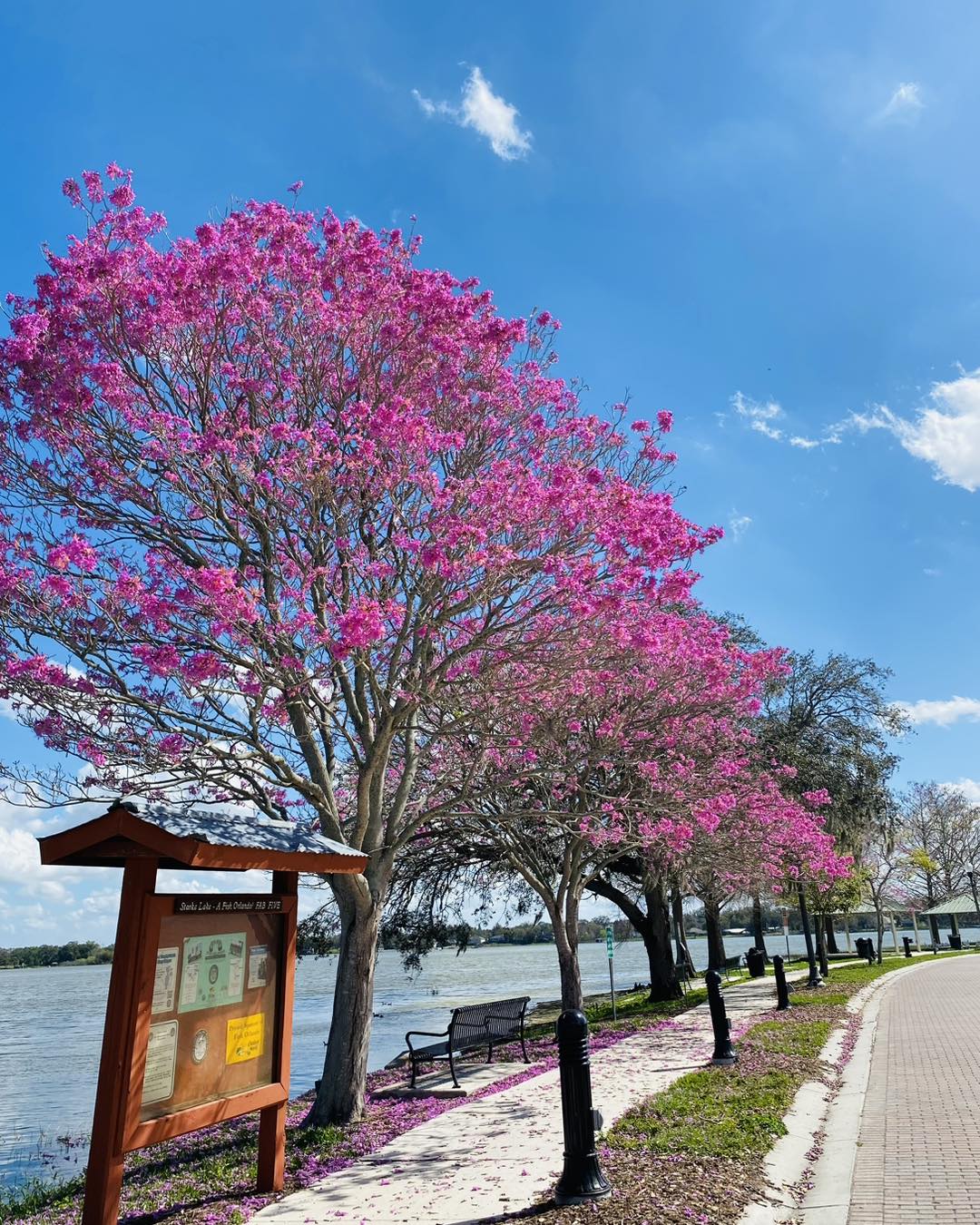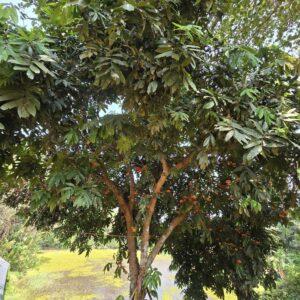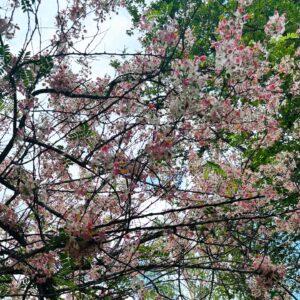The Pink Tabebuia Tree “🌸🌳 The Trumpet of Spring Beauty: The Pink Tabebuia Tree
The Pink Tabebuia Tree (Tabebuia rosea) is a semi-deciduous flowering tree known for its trumpet-shaped pink blossoms that reach their peak beauty right before or after its leaves fall. Its fluffy, pink, cherry-like canopies make it a well-liked option for tropical climate streets, gardens, and parks, creating an unforgettable visual impression.
Tabebuia rosea, sometimes referred to by local names like, is indigenous to Central and South America.
Trumpet Tree with Pink Flowers
Trumpet Tree with Rosey Blooms
India & Pakistan’s Apama
(in Spanish-speaking areas) rosado
Introduction to botany
The scientific name is Tabebuia rosea.
Family: Bignoniaceae
Popular Names: Rosy Trumpet Tree, Pink Trumpet Tree
Species: A flowering tree that is somewhat deciduous
25–40 feet (7.5–12 meters) in height, with the possibility of greater height under perfect circumstances
20 to 30 feet is the canopy width.
Leaves: Green in color, palmately complex with five leaflets, and turning yellow before falling.
Flowers: Groups of trumpet-shaped, pink to lavender blossoms with yellow throats
Late winter to early spring is the blooming season (February to April).
Moderately rapid growth rate
Life expectancy: over 50 years
The need for light and a certain climate
Sunlight:
Demands direct sunlight for 6–8 hours a day
More sunshine equals greater blooms.
Temperature:
Perfect range: 20°C to 35°C
Can withstand both extreme heat and the rare, moderate frost
Ideal for tropical and subtropical climates comparable to USDA zones 9–11.
In warm areas like Central America, the Caribbean, and South Asia, it works best.
Watering Schedule
Young Trees (first 1–2 years):
Water thoroughly twice or three times a week throughout dry periods.
Maintain a moist, but not wet, soil condition.
Mature Trees:
After becoming established, it can withstand drought.
In dry or hot weather, water every 10 to 14 days.
Reduce watering during the cooler months.
Watering helps keep plants blooming throughout dry spells, but excessive watering should be avoided.
🌱 Soil Preferences
Kind:
Likes loamy soil that drains well
With drainage, it may thrive in soils ranging from sandy to gravelly to somewhat clayey.
The pH is between mildly acidic and neutral (6.0 and 7.5).
Soil should not be compacted; aerate around the root zone once a year.
Requirements for fertilizer
Mix in aged manure or organic compost at planting.
Every year’s schedule:
Before flowering, use a balanced fertilizer, such as 10-10-10 or 12-6-6, once in early spring.
Second feeding after flowering to increase foliage is optional.
Don’t feed your plants food that is high in nitrogen because it encourages leaf development at the expense of flowers.
Maintenance and Pruning
The ideal moment for pruning:
After blooming in the late spring
Because it can lessen blooms, refrain from pruning in the winter.
Pruning methods:
Get rid of suckers at the base, crisscrossing limbs, and deadwood.
Light canopy thinning lowers the risk of illness and improves airflow.
Additionally, pruning helps regulate height and improve form in confined areas.
Ways of propagation
Seeds:
simple to reproduce from seeds gathered after flowering
In warm, moist soil, it will sprout in one to two weeks.
Cuttings:
Use semi-hardwood cuttings from healthy branches
The success rate increases with the use of rooting hormone.
🌱 Trees grown from seed might bloom in 3–5 years, whereas grafted or nursery plants bloom sooner.
🐛 Diseases and Pests
Although typically resistant to pests, it may face:
Caterpillars
Whiteflies (uncommon) or aphids
Leaf spot in persistent humidity
Recommendations for preventing disease:
Make sure there is adequate space and ventilation.
Get rid of any dropped petals or leaves to prevent the growth of fungus.
Neem oil or horticultural soap works well for most pest problems.
🌸 Visual Appeal & Landscaping Applications
Ideal for:
planting trees along streets and pathways
Big garden centerpieces
Landscapes of schools and campuses
temples and public gardens
Complementary Plants:
hibiscus, bougainvillea, frangipani, and amaltas
Visual effect:
The “”cherry blossom”” illusion is created by the flowers blooming before the leaves reappear.
When flowers fall, they form a carpet of pink petals, which is a joy for photographers!
✅ Conclusion
One of the most exquisite and stunning decorative trees you may use to enhance your scenery is the Pink Tabebuia Tree. It gives you beautiful trumpet flowers, shade, and a tropical mood with little maintenance. With its rosy canopy and fluttering flowers, the Pink Tabebuia is a show-stopper every spring, whether you’re planting along streets or making a centerpiece in your yard.
“
Tabebuia tree (Pink)
₨800.00
“The magnificent decorative tree known as the Pink Trumpet Tree, or scientifically, the Pink Tabebuia Tree, or *Tabebuia rosea*, is valued for its spectacular, trumpet-shaped pink blooms that cover the branches in early spring, often before the leaves appear. It originates in Central and South America, where it produces a stunning floral show that turns streets and gardens into vibrant canopies.
The tree has palmately compound leaves, rough bark, and a rounded crown. It thrives in full sun and well-drained soil, is somewhat drought-tolerant, and requires little upkeep after it is established. Bees and butterflies are drawn to Pink Tabebuia, which makes it ideal for lining roadways, improving parks, or serving as a beautiful centerpiece in tropical and subtropical landscapes.
.”





Reviews
There are no reviews yet.